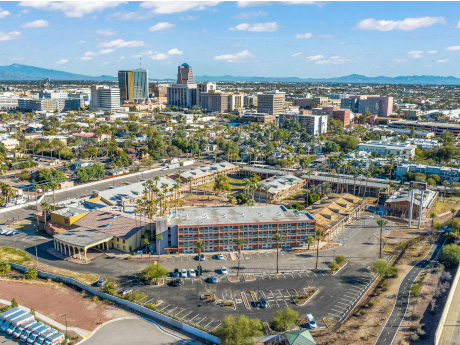WASHINGTON, D.C. — With many office buildings, hotels and shopping malls sitting vacant or underutilized, repurposing commercial properties into multifamily housing is growing more commonplace. A recently released report suggests that these conversions could be financially feasible across a broad range of markets and circumstances.
“Conversions have existed for decades, but the pandemic has accelerated their growth potential by rendering more commercial properties obsolete,” says Anita Kramer, senior vice president of the ULI Center for Real Estate Economics and Capital Markets. “Our research demonstrates that there’s no ‘cookie-cutter’ formula for executing a successful project, but we do hope the insights that experienced developers shared with us can provide valuable guidance.”
Behind the Facade: The Feasibility of Converting Commercial Real Estate to Multifamily was conducted by the National Multifamily Housing Council (NMHC) Research Foundation and the Urban Land Institute (ULI) Terwilliger Center for Housing. The report examines the viability of converting old or under-utilized commercial properties, with data gathered through interviewing the developers of 29 commercial-to-multifamily conversion projects.
According to the report, costs can vary based on several factors, particularly the initial acquisition and the demographic the project targets once completed. Most developers reported successful returns on investment regardless of cost, however, with their pro-forma expectations purportedly having been met or exceeded.
One developer expressed that the speed of conversions compared to ground-up projects was a notable financial advantage.
“Digging a hole and pouring concrete is slow,” the developer stated. “Six to 10 months can be saved if the sequencing of the conversion work is done correctly. When evaluating a project, speed is something we look at closely.”
The varying locations of the projects included in the report — ranging from big city markets such as Los Angeles, Atlanta and Dallas to smaller cities such as Allentown, Pennsylvania and Parkville, Missouri — also indicate that commercial-to-multifamily conversions are potentially viable in both urban and suburban markets.
Additionally, the report suggests that building vacancy may have less impact on the success of a conversion than initially assumed. The developers that needed to negotiate lease terminations with tenants of occupied properties did not report any impediments.
What can be an impediment, however, are the structural components of a building.
“Converting a building is so much more complex than just a change in use,” one developer converting a 1960s-vintage property explained. “Floor plates, column grids, floor-to-floor height, window systems, HVAC, sewer outfall, and so much more need to be studied. You really don’t know what you’re getting into until you take off the façade and walls, bring it down to the concrete.”
For this reason, the report emphasizes the importance of having an experienced team of general contractors, architects and engineers. Flexibility and adaptability are also important factors, since redesign and reconfiguration can happen in real time with conversion projects.
“If you don’t have a good team that can think outside of the box, don’t take on a project like this,” another developer cautioned. “You can never let a roadblock get in the way.”
The report acknowledges that the potential pace and extent of future conversions is uncertain, and will depend on a variety of factors. Zoning regulations — especially those that have changed since the property was originally constructed — can significantly increase allowable density, making ground-up development more attractive than conversions, for instance. Other factors include the willingness of owners to put obsolete commercial properties on the market as well as the relative performance of the multifamily market in a region.
“Commercial-to-multifamily conversions can be one of the ‘all of the above’ solutions we need to the nation’s affordable housing crisis,” says Caitlin Sugrue Walter, NMHC’s vice president for research. “This research helps housing providers and policymakers better understand when these conversions make sense.”
— Channing Hamilton


